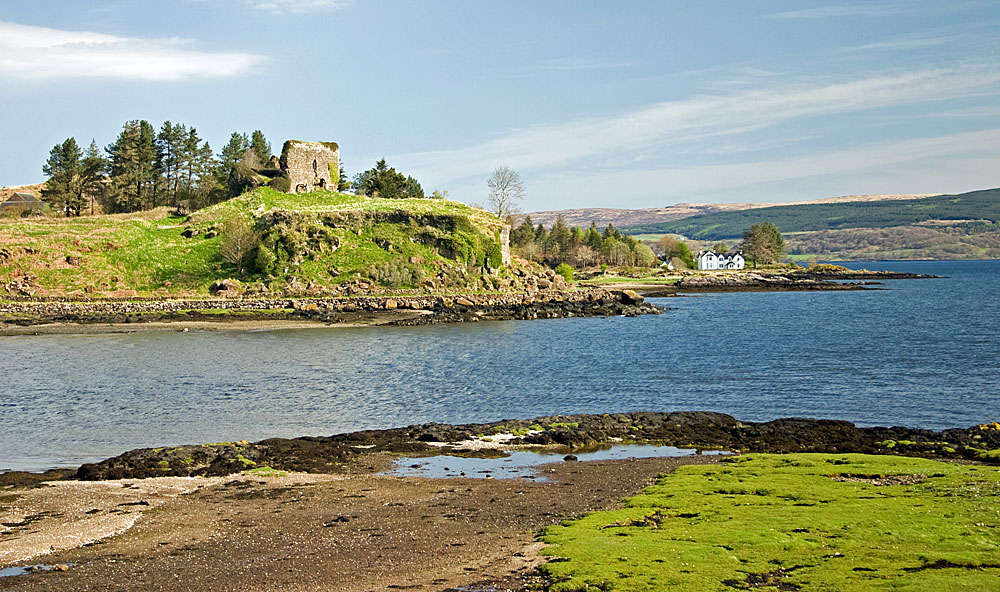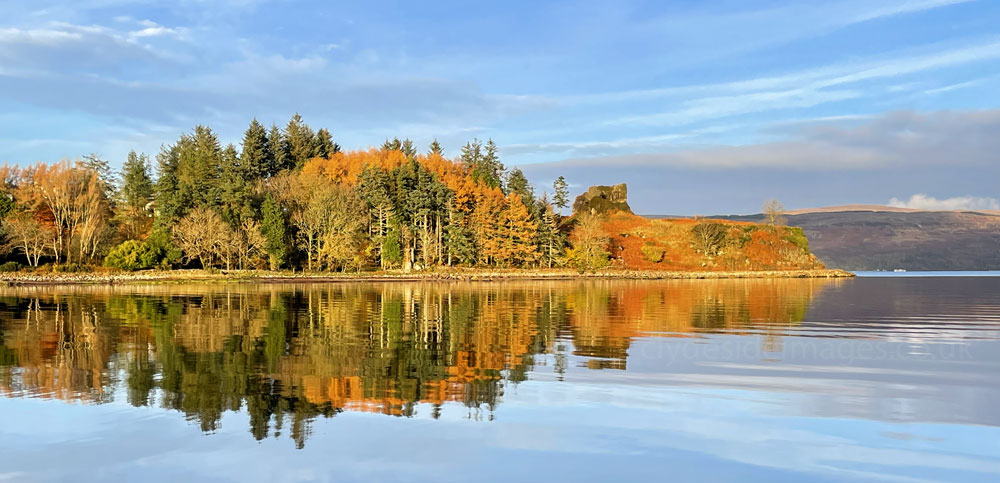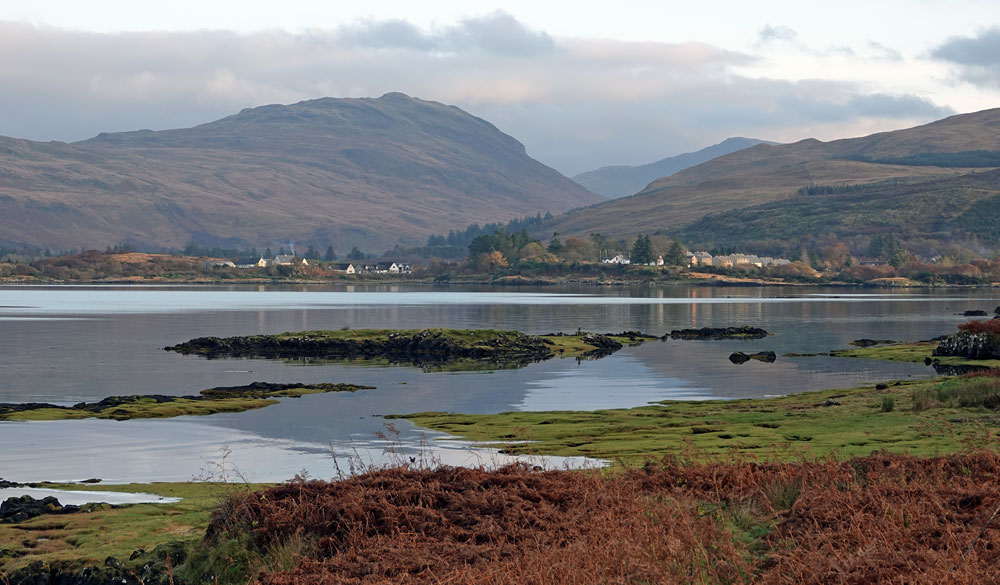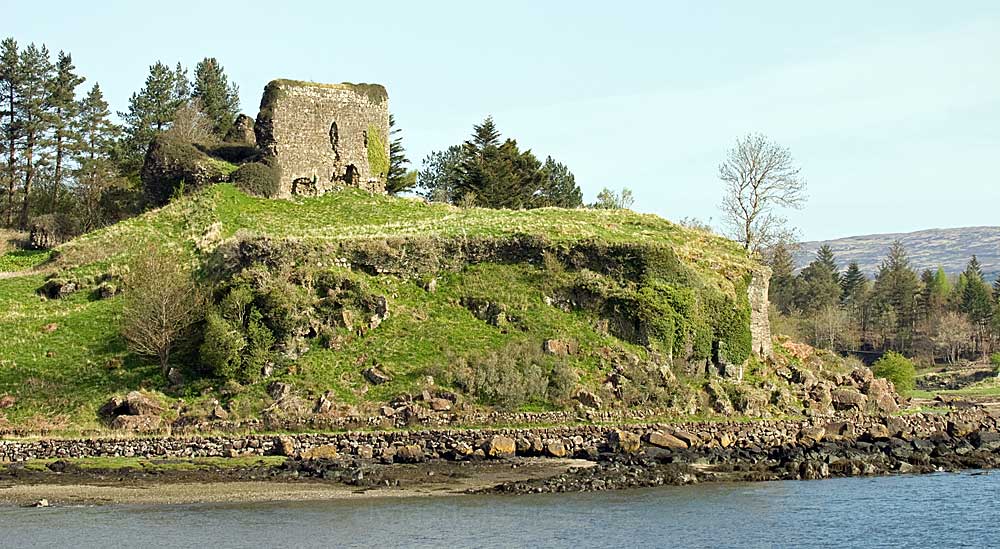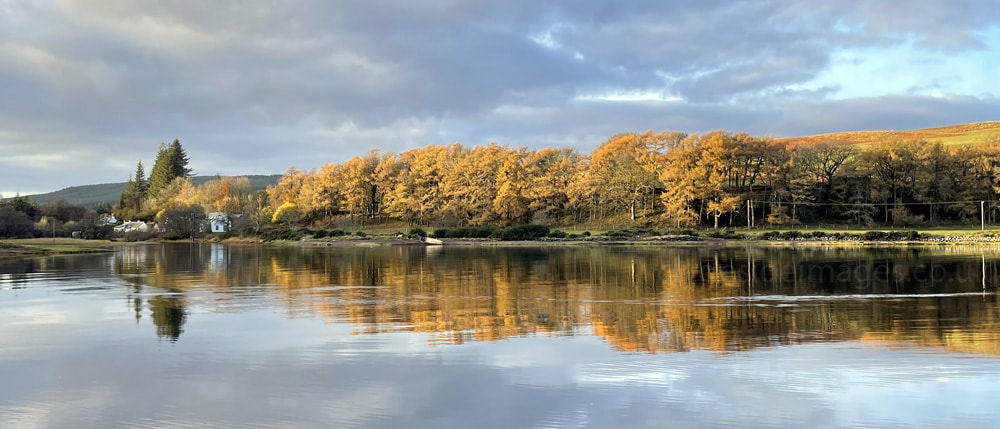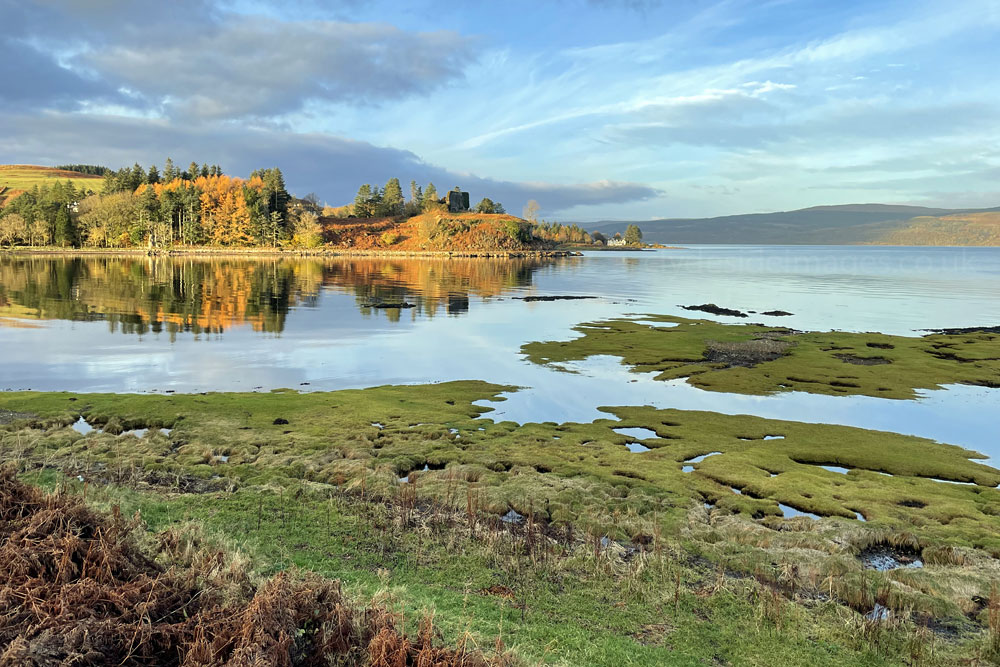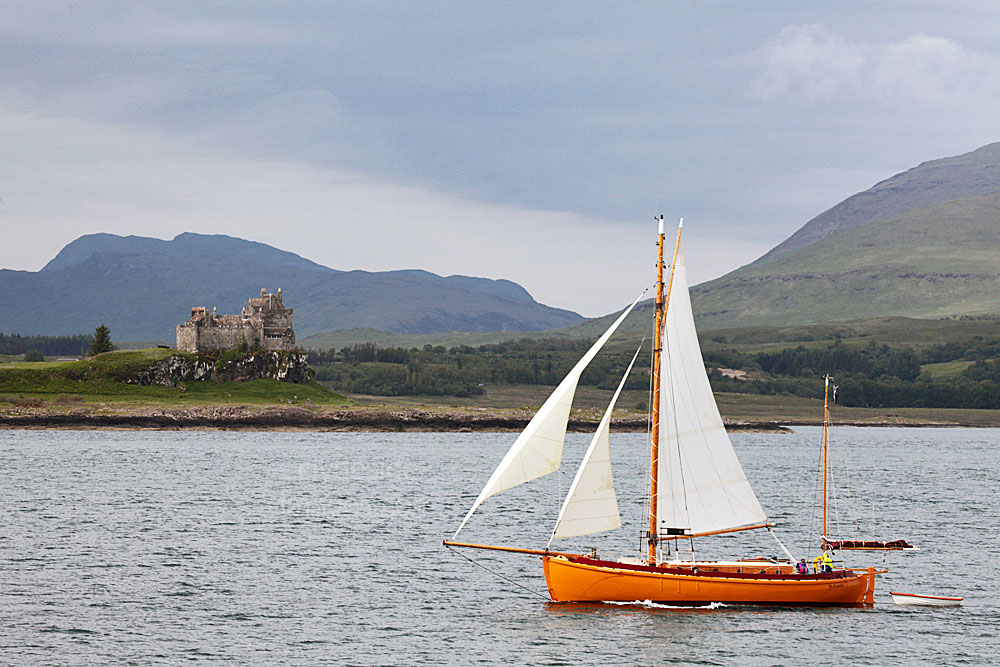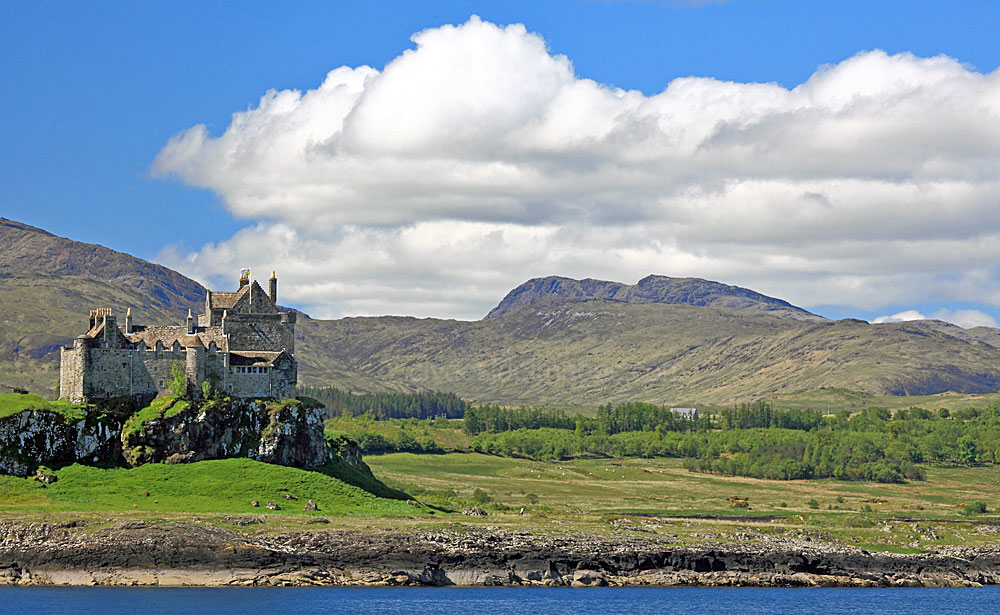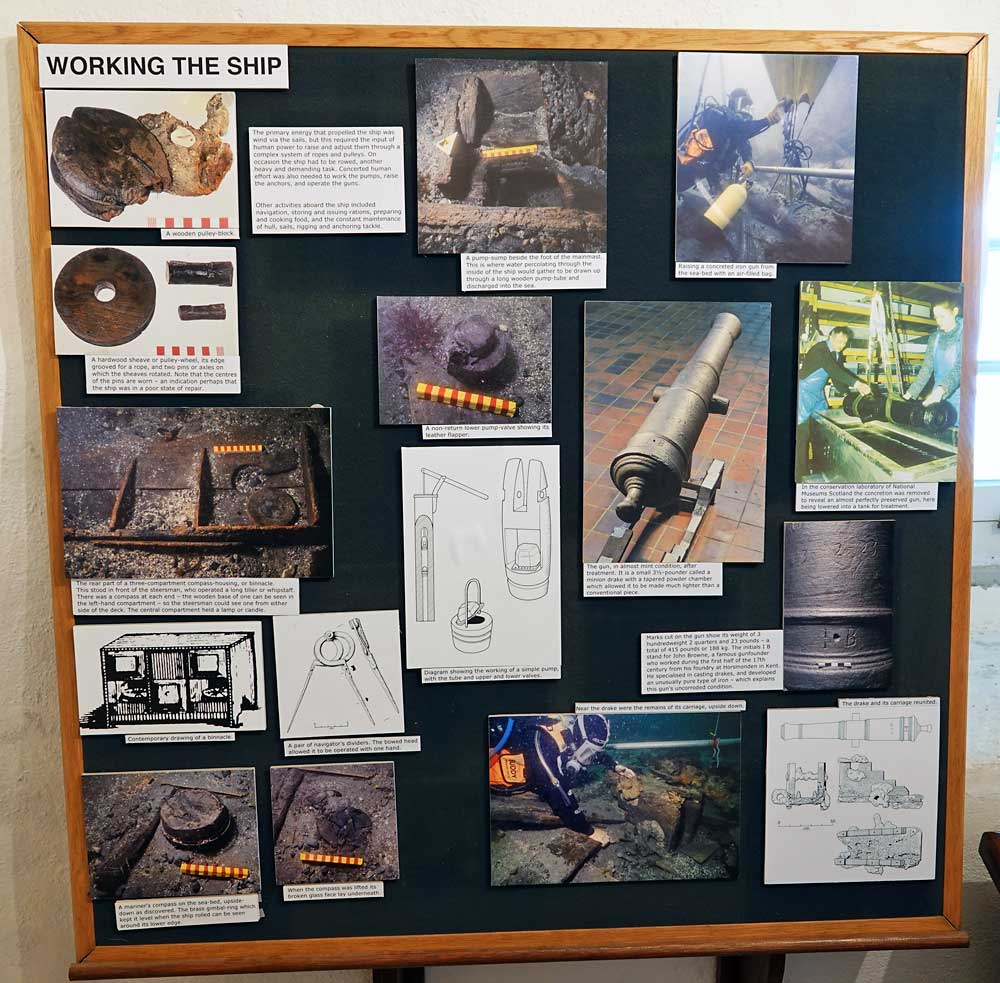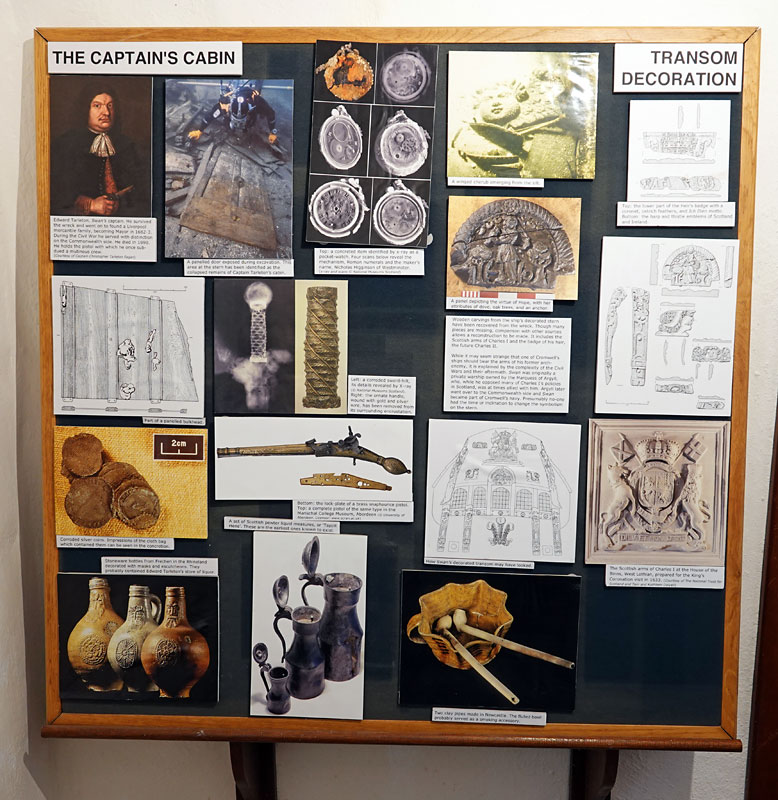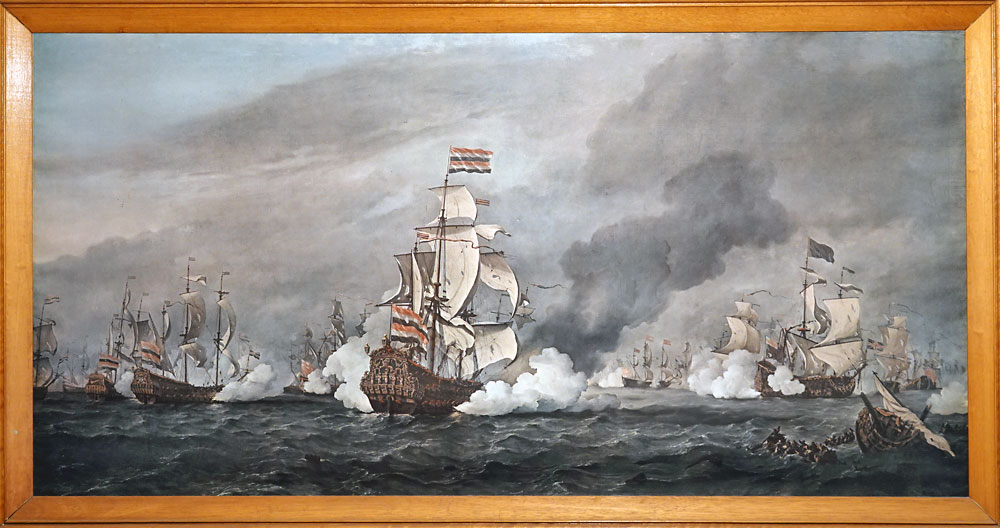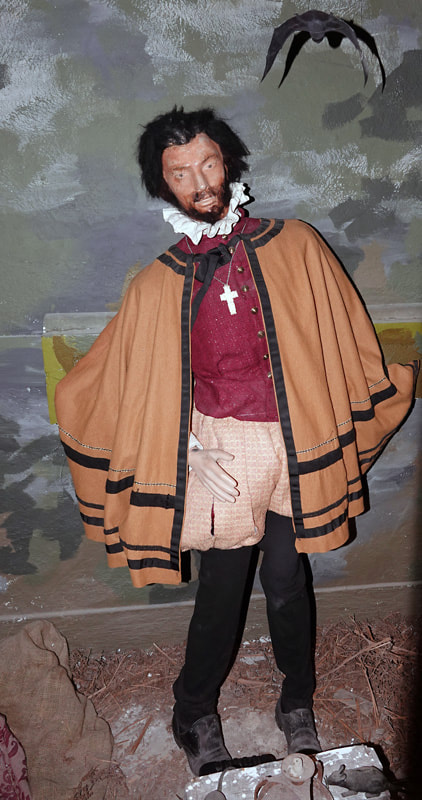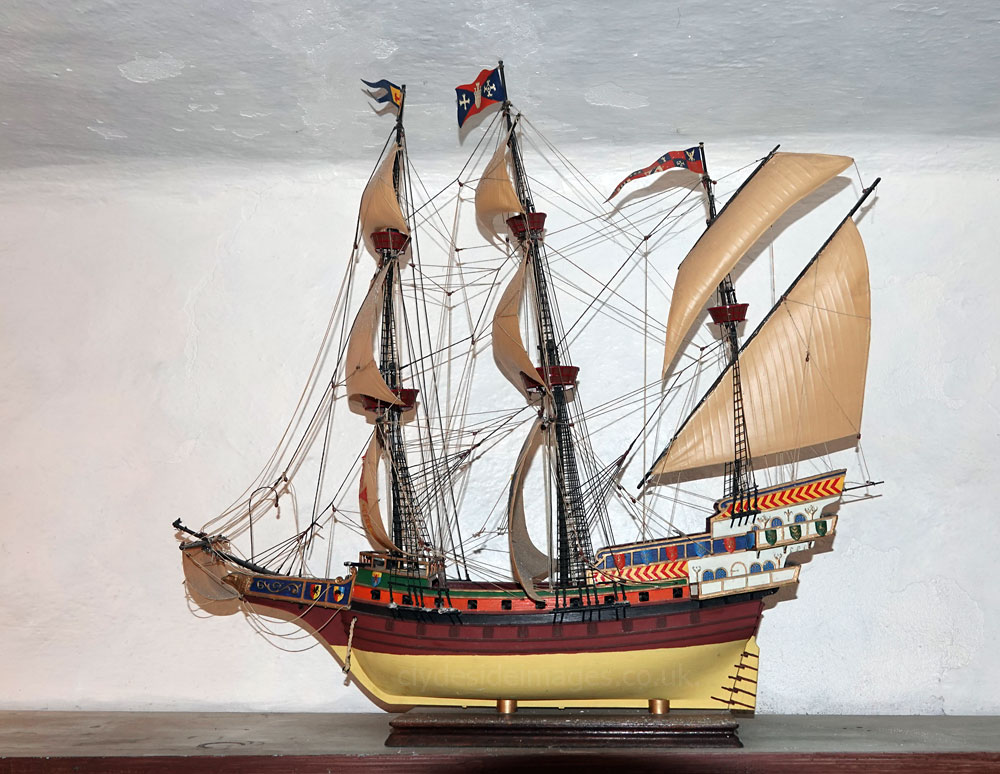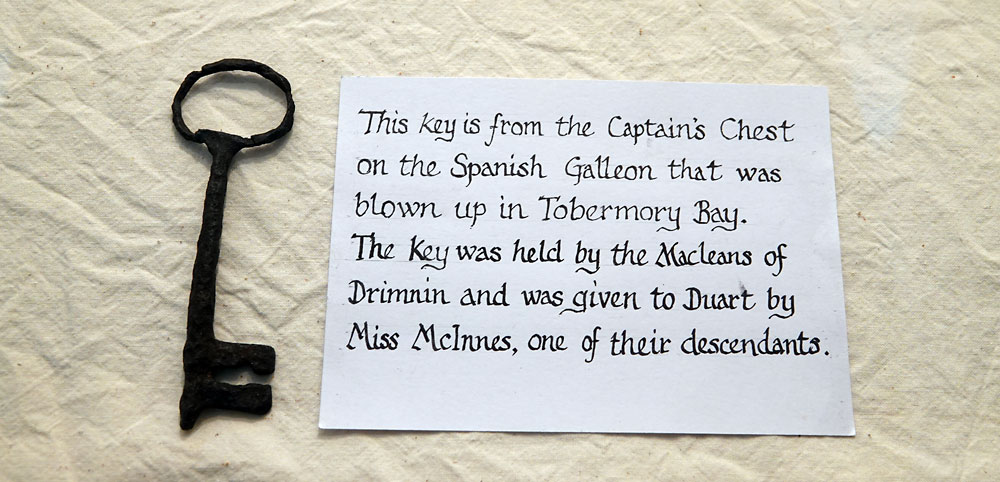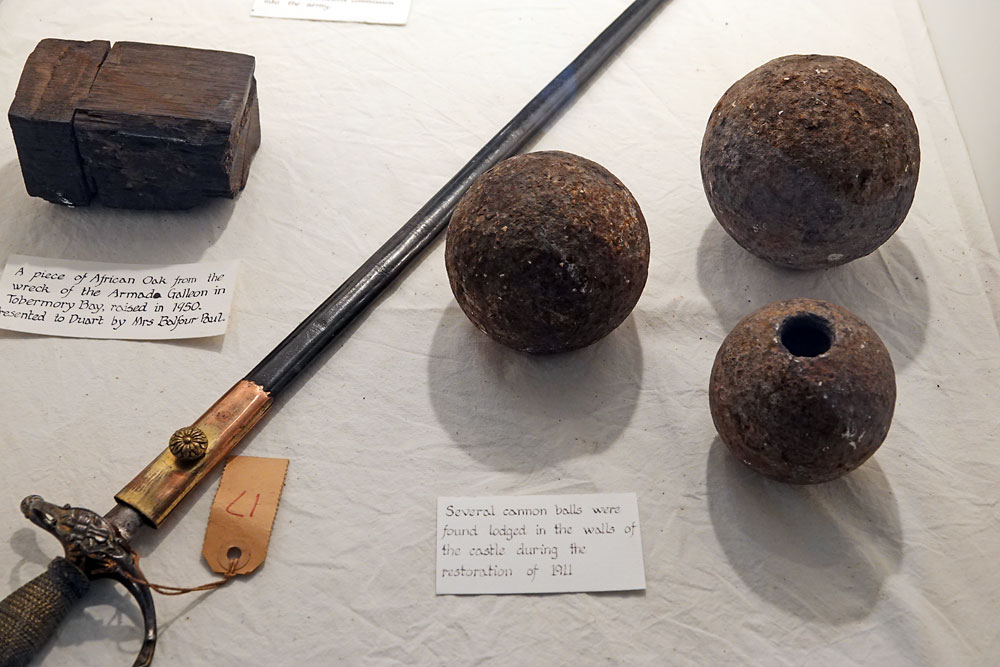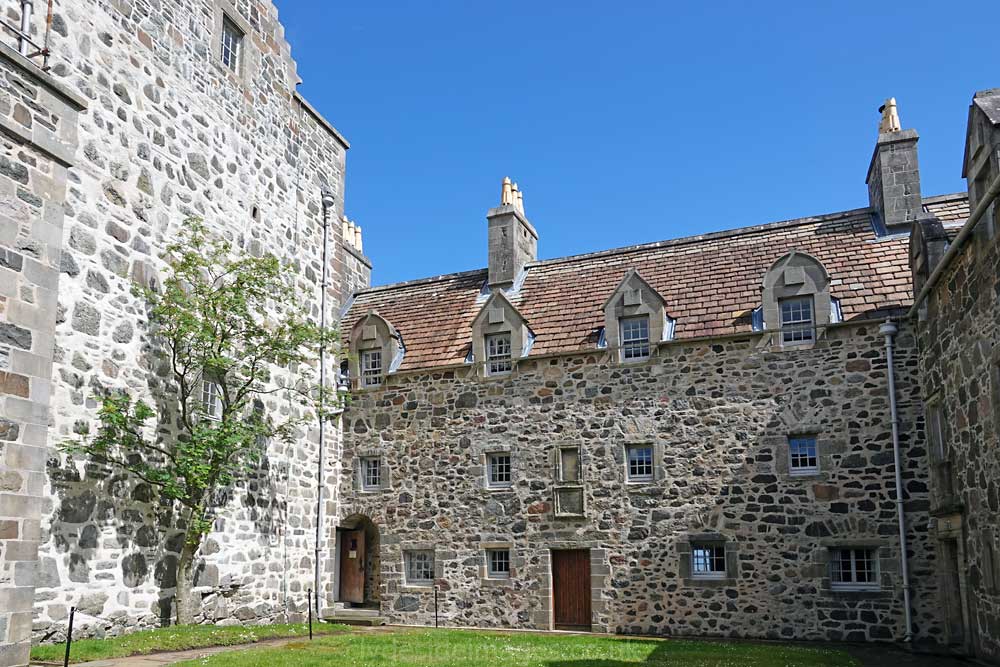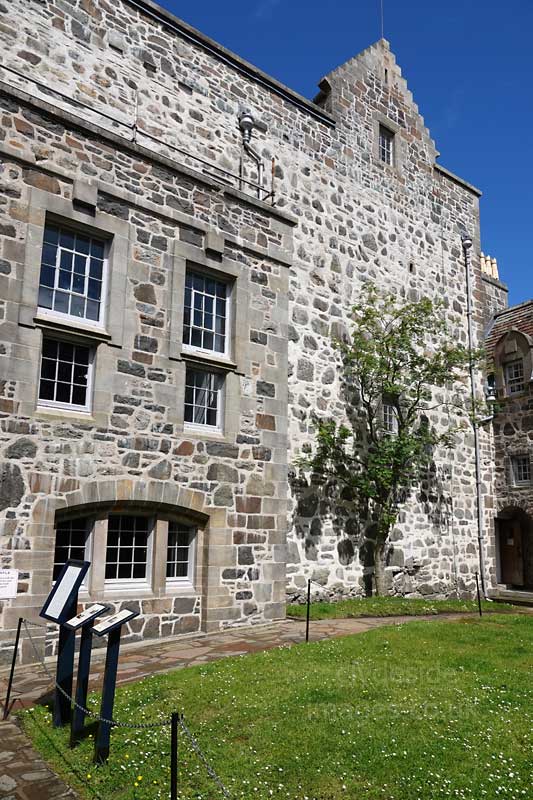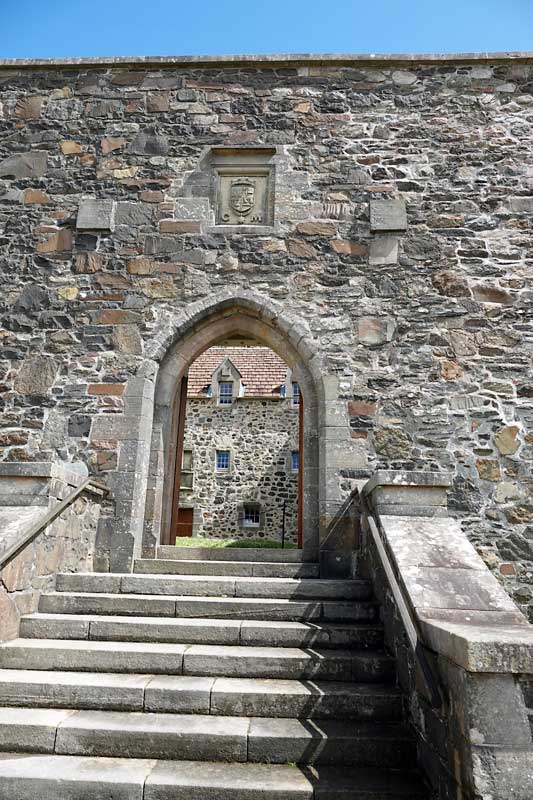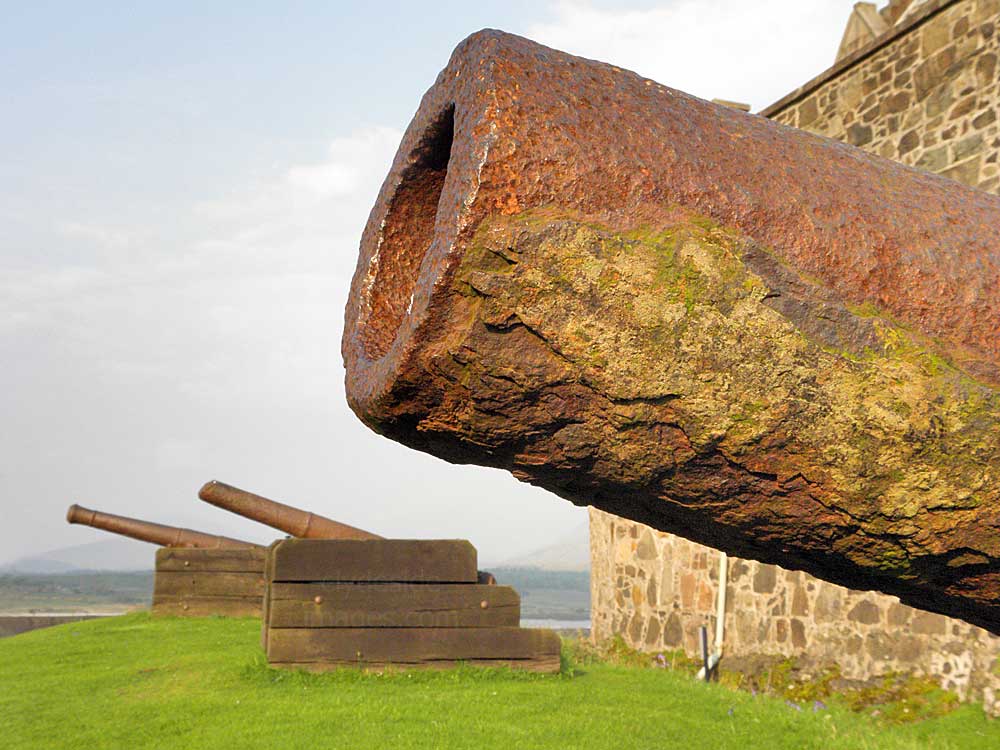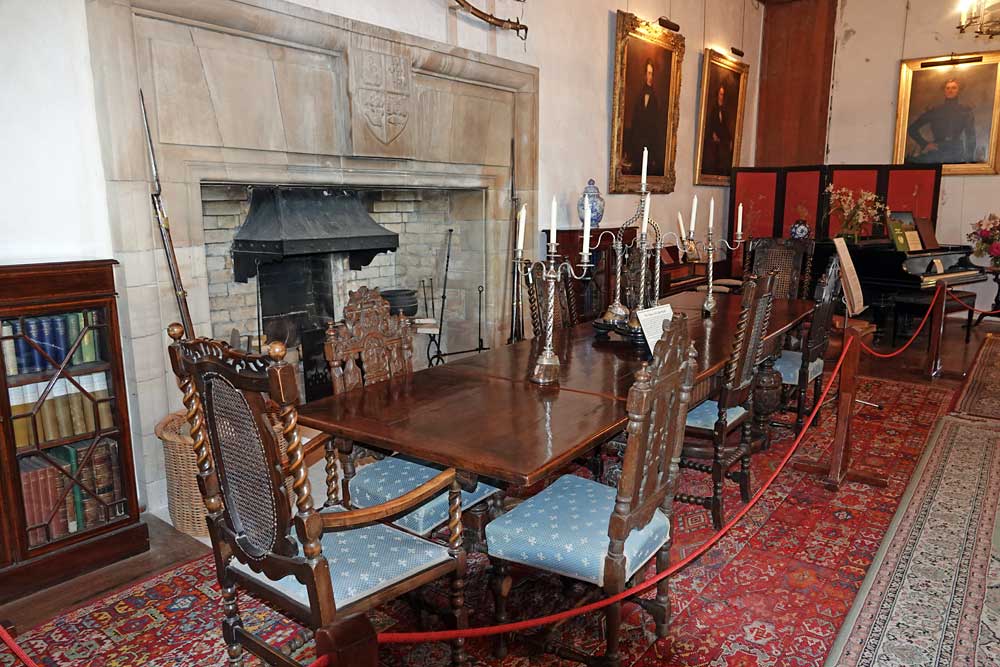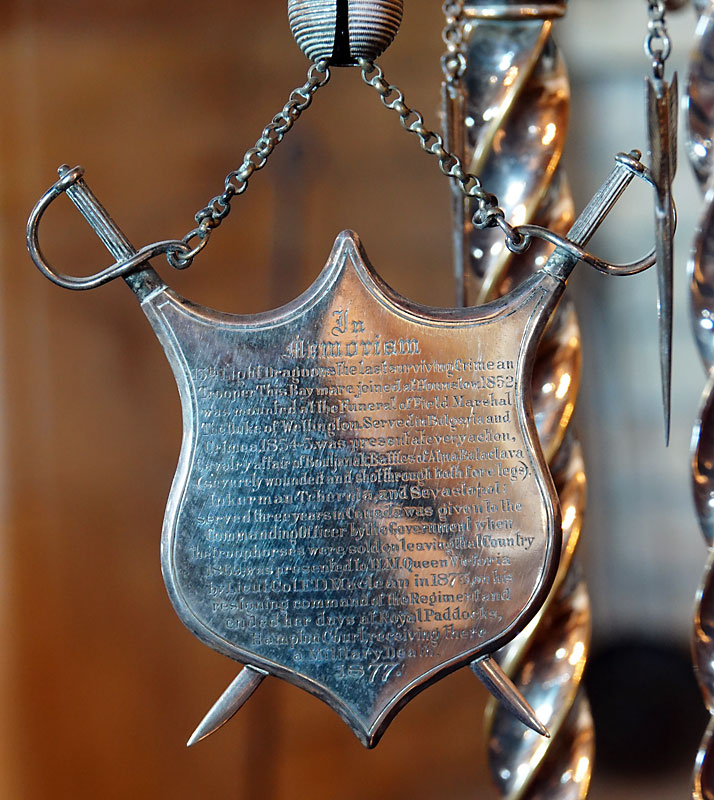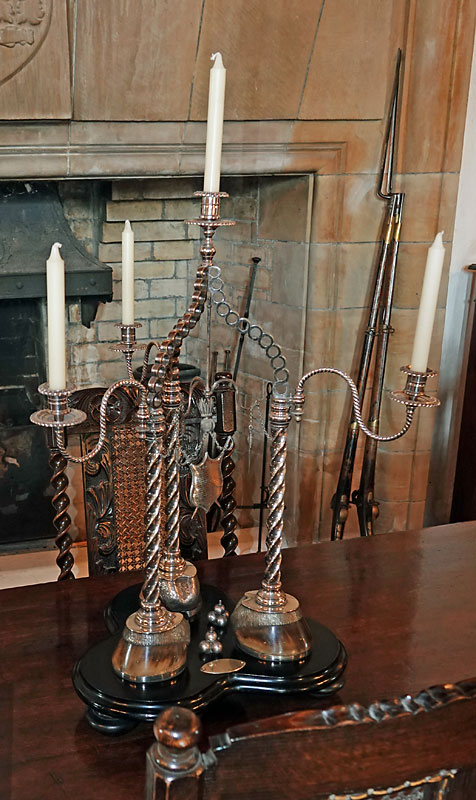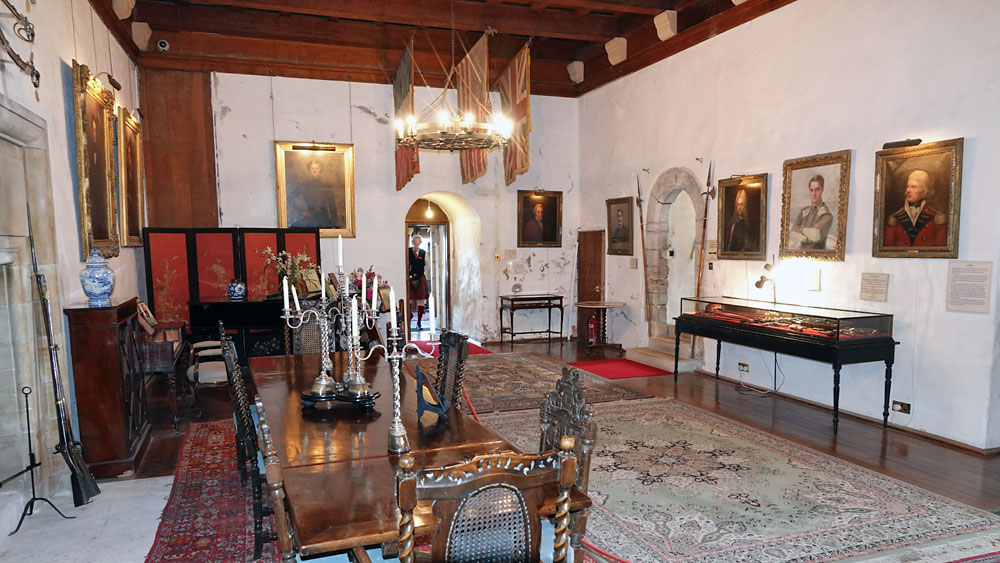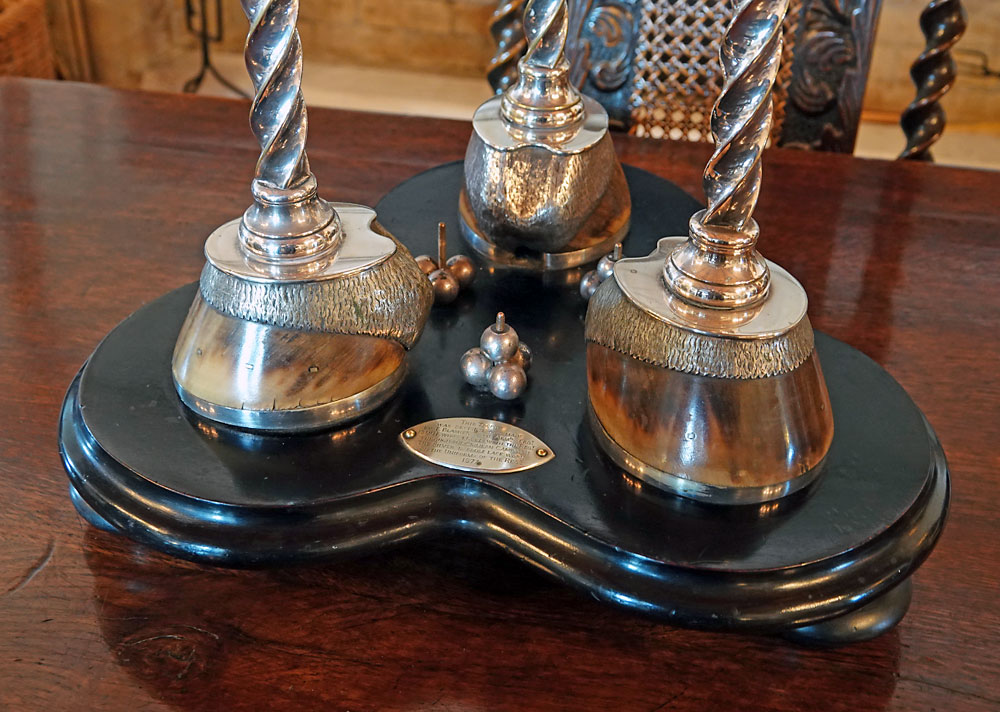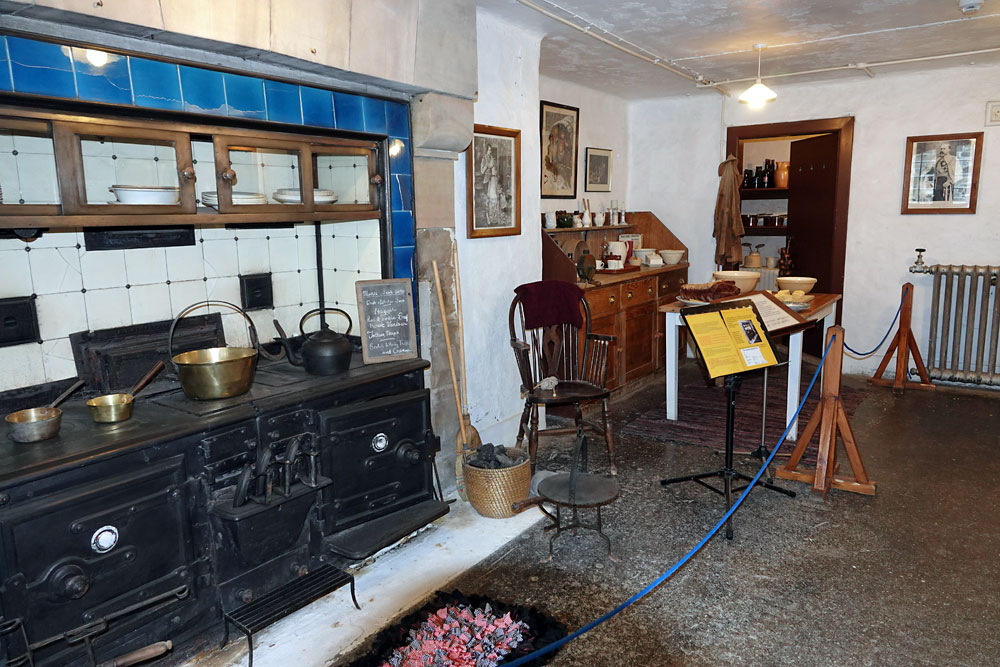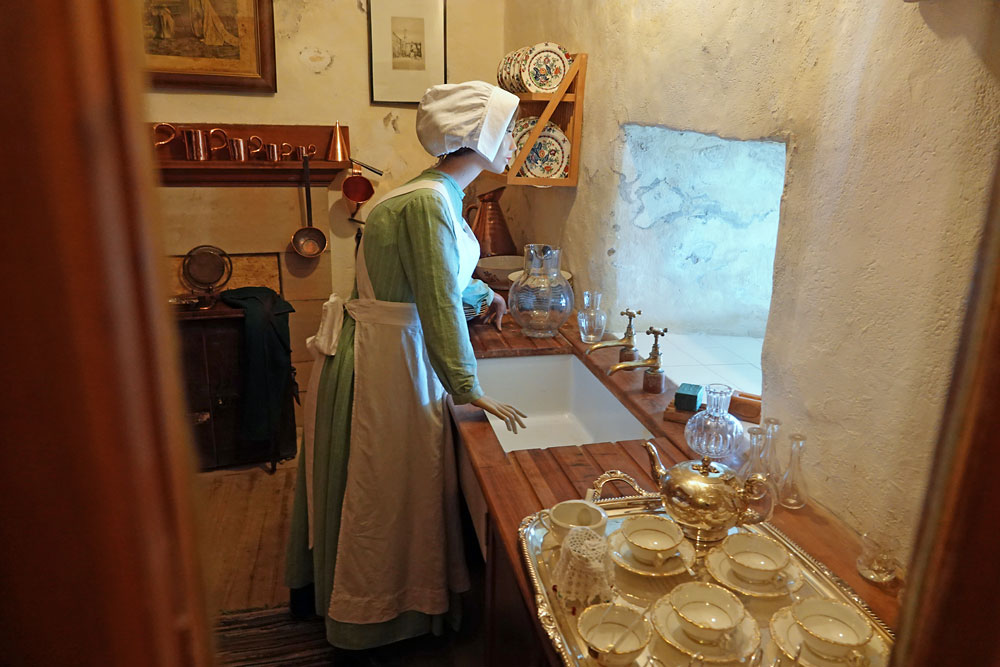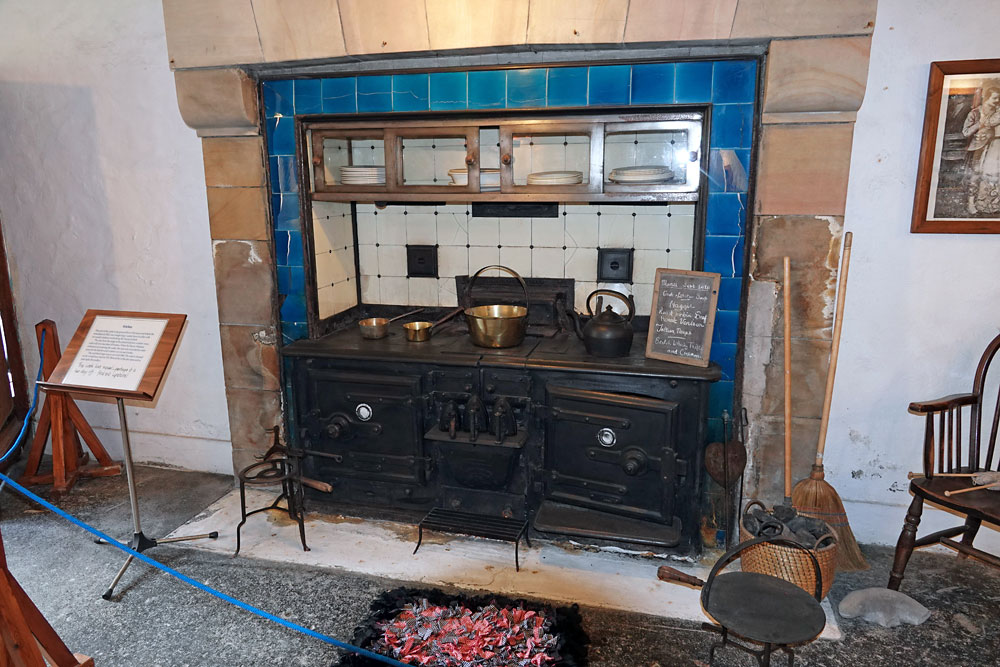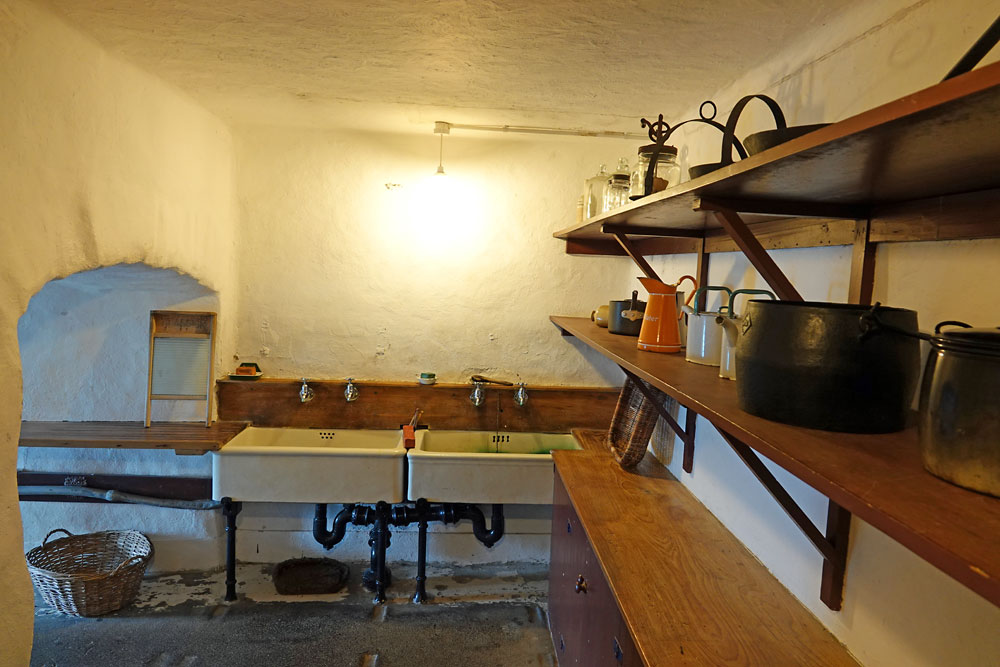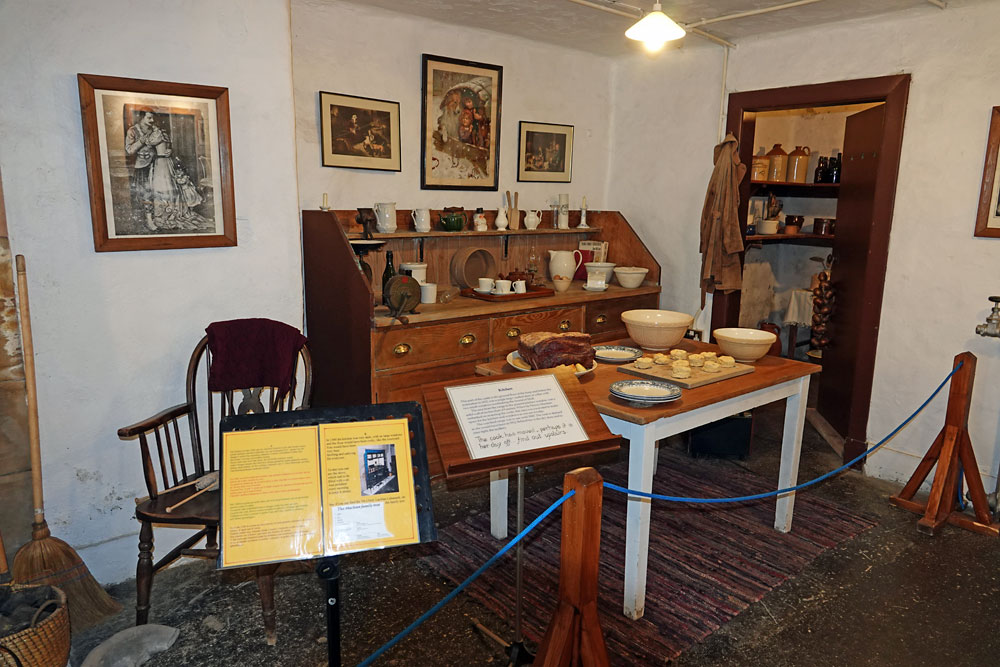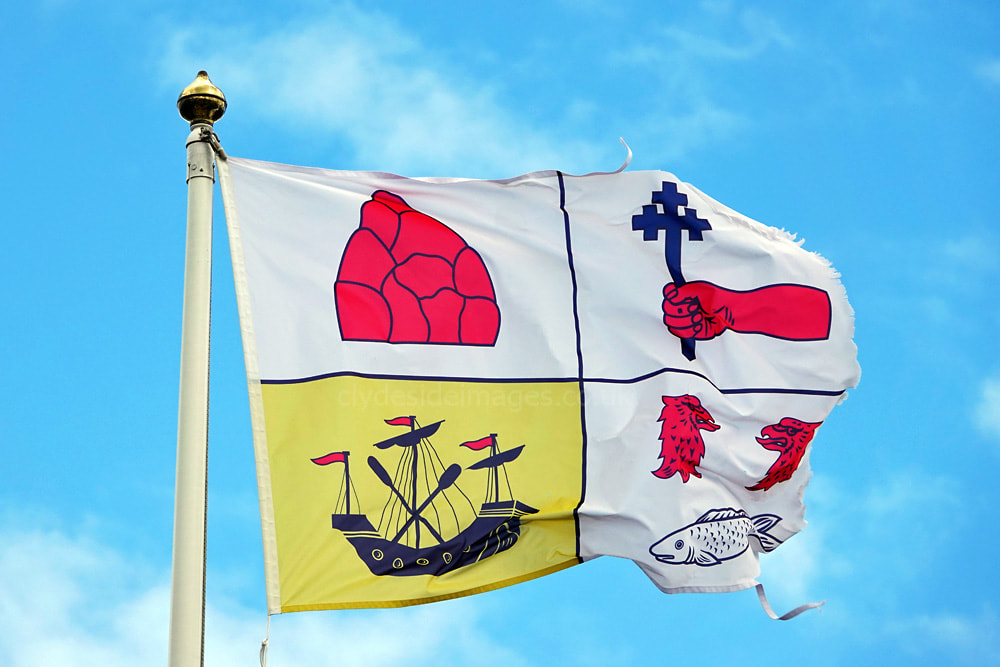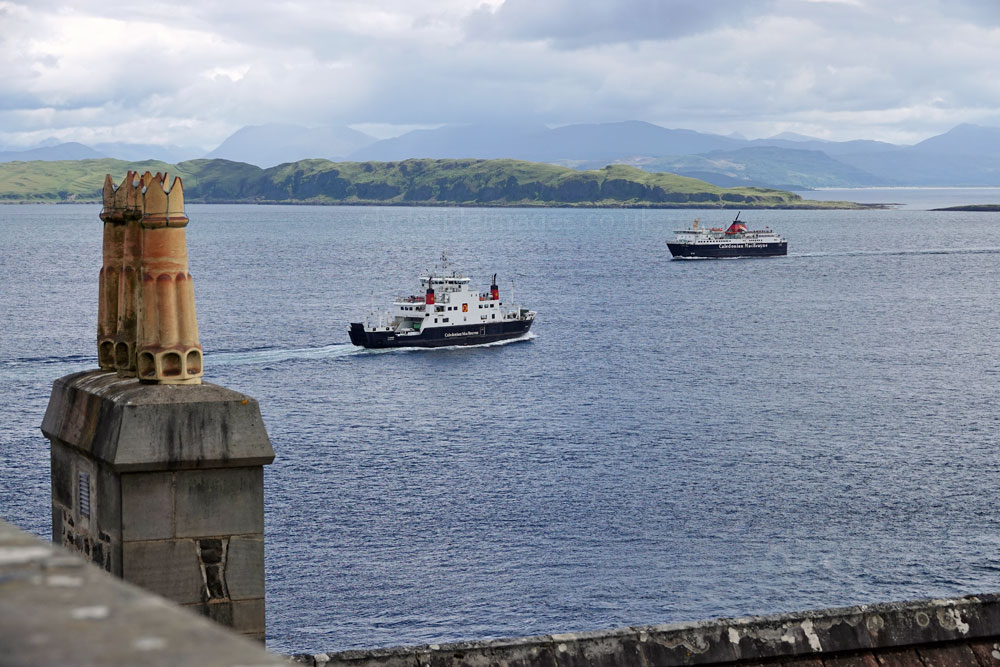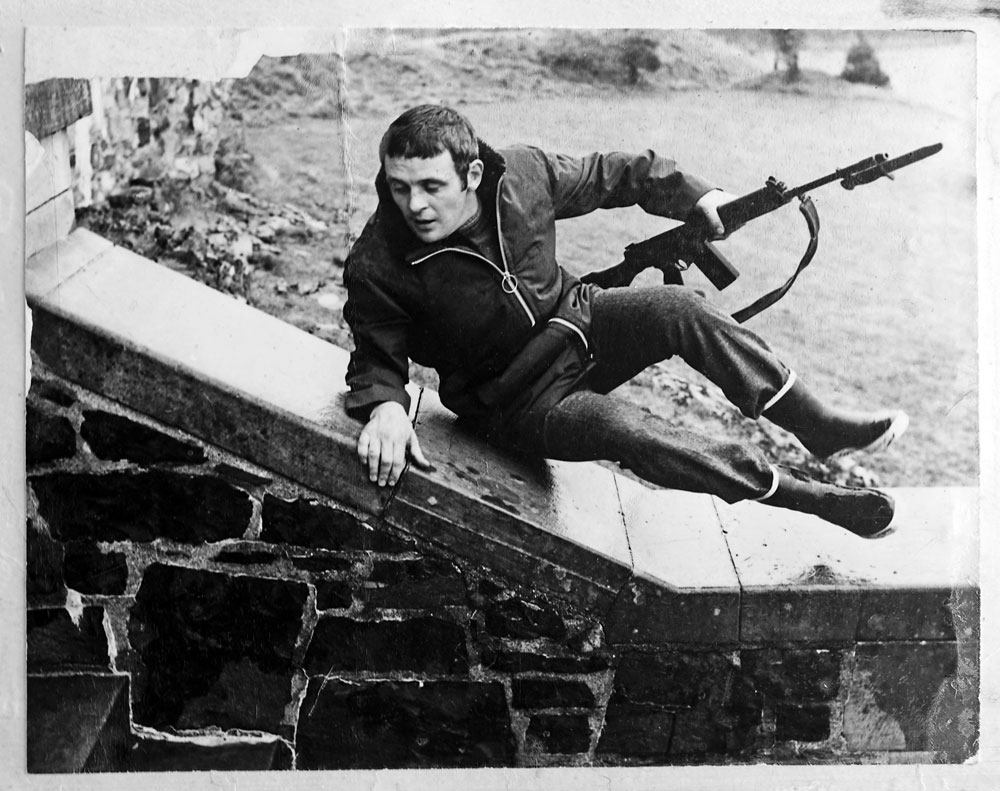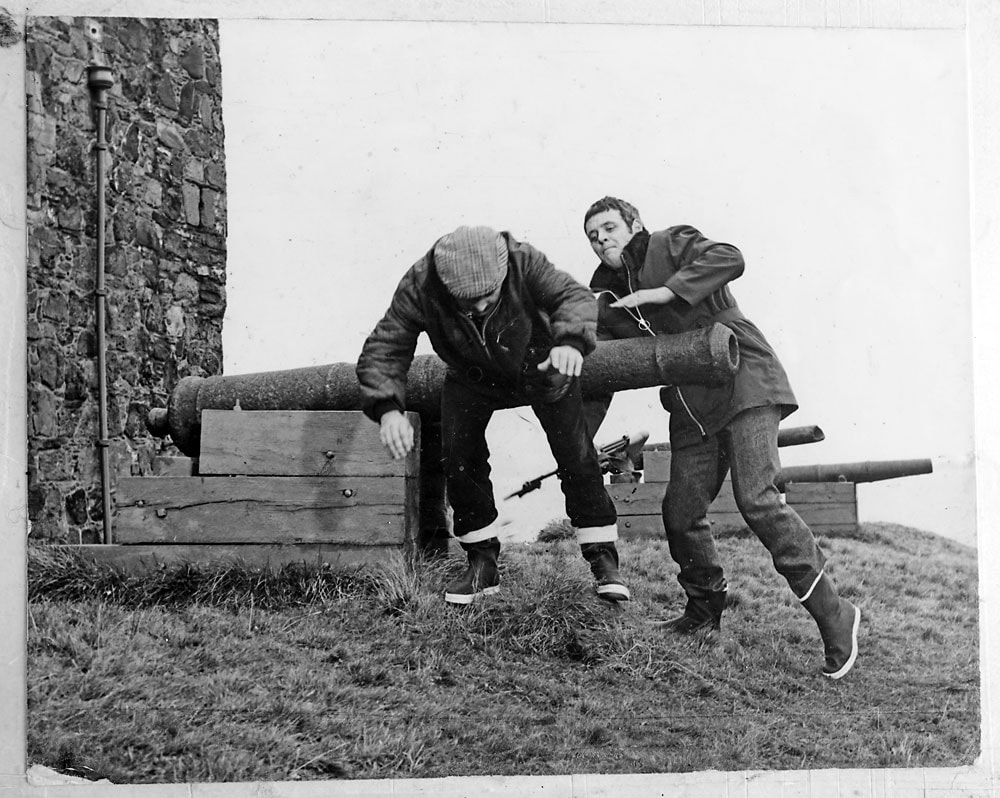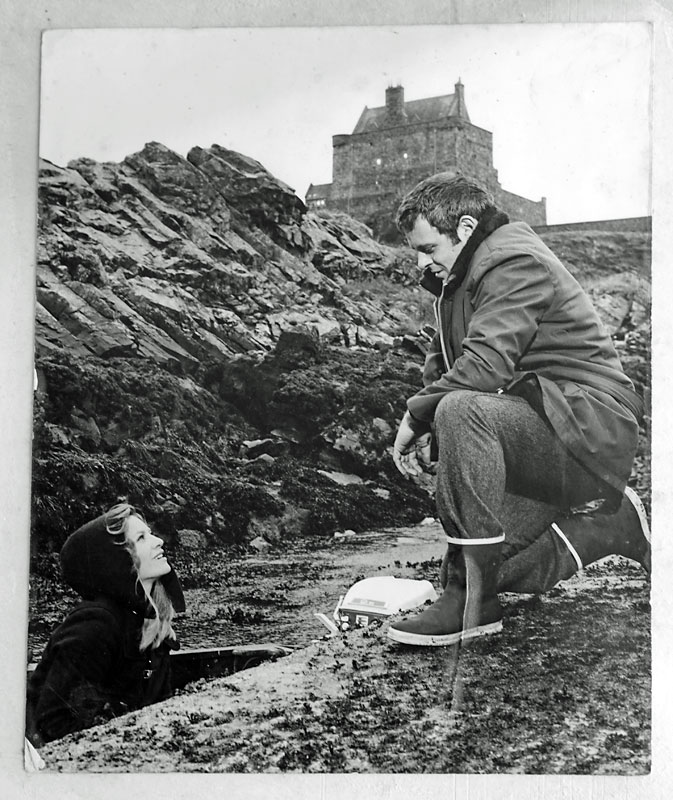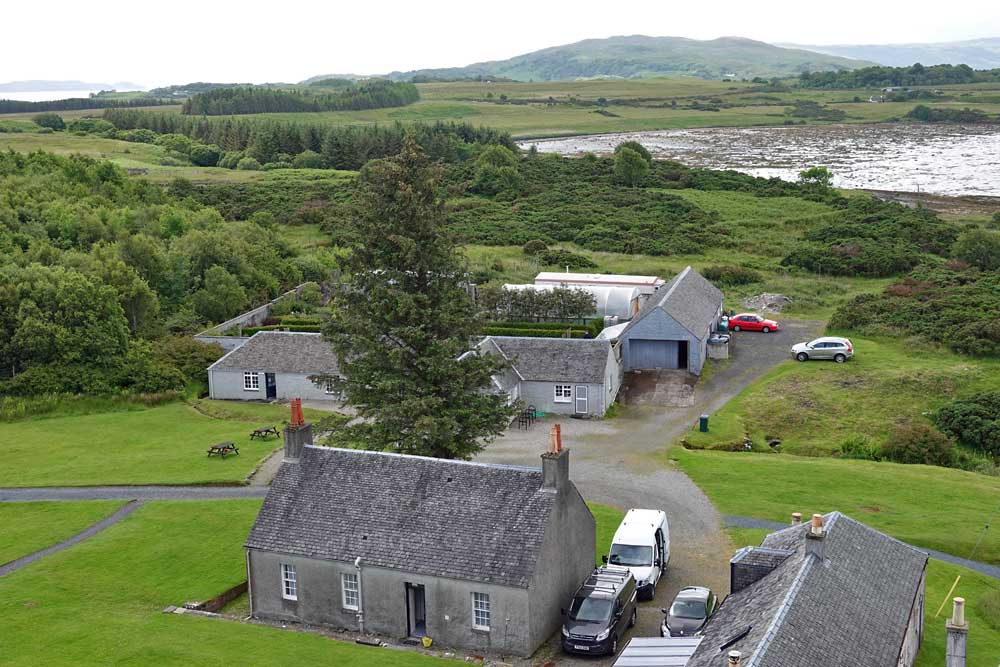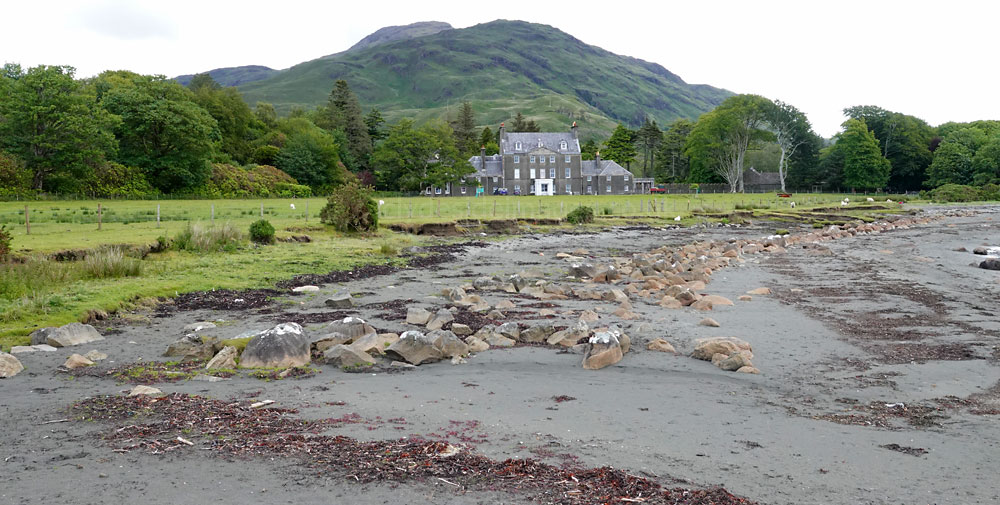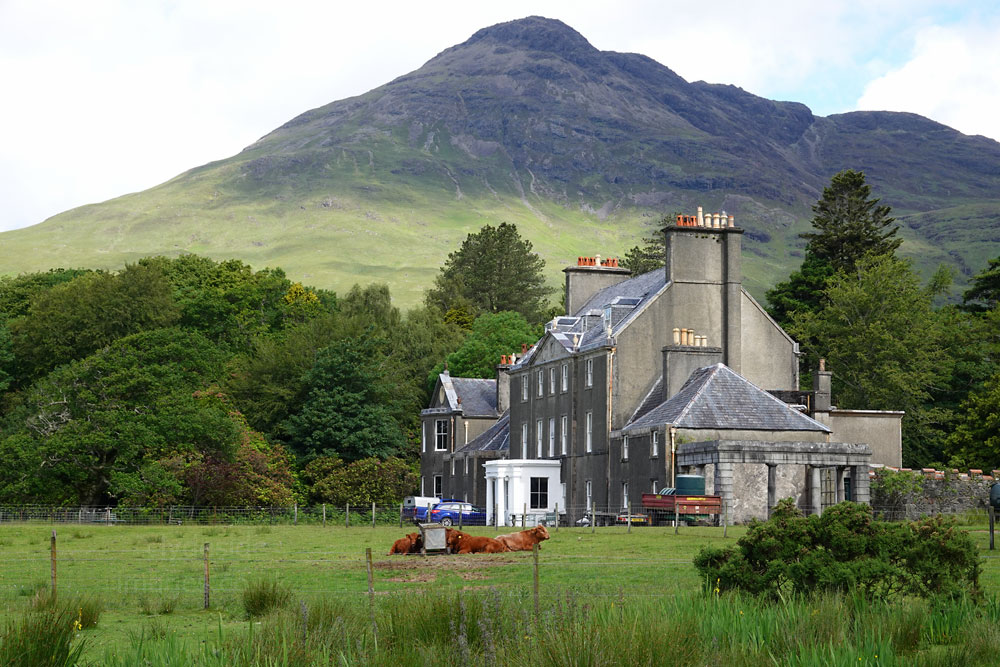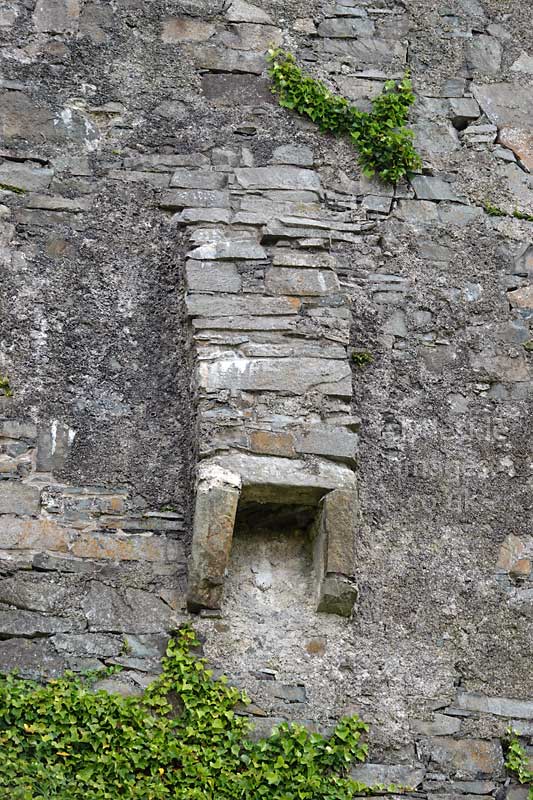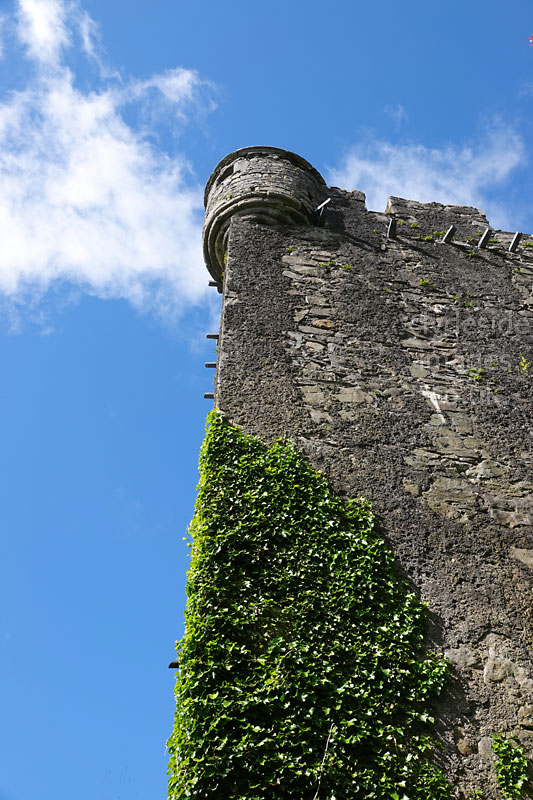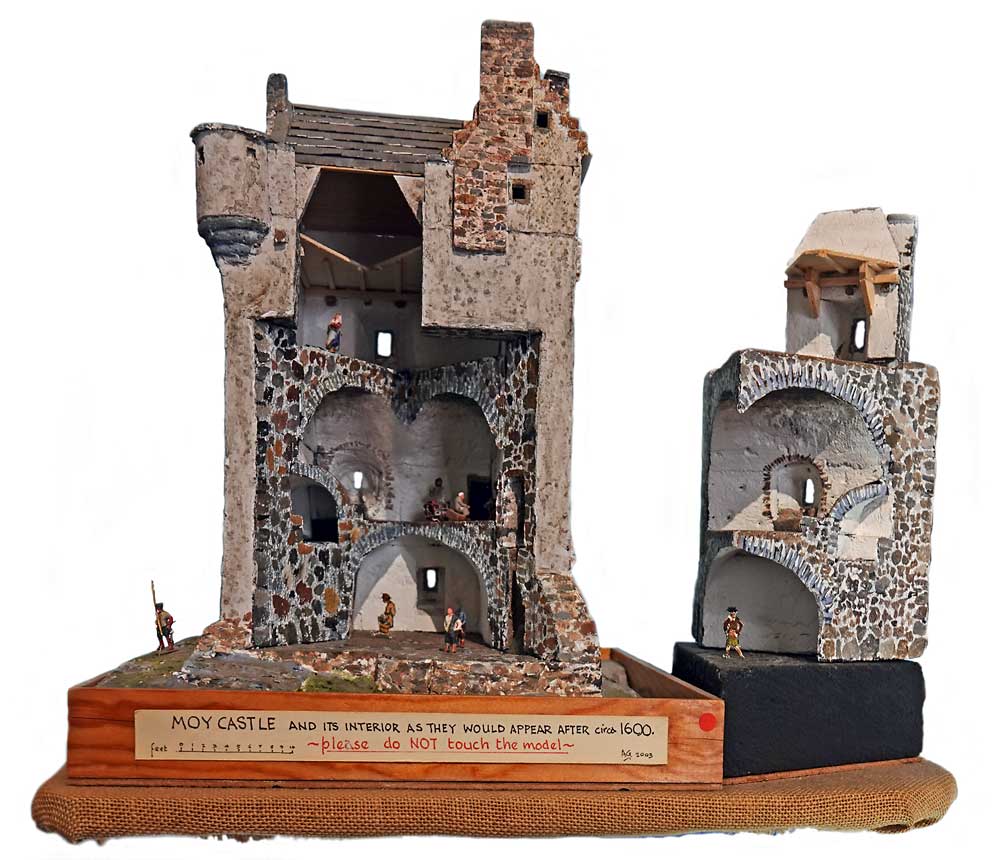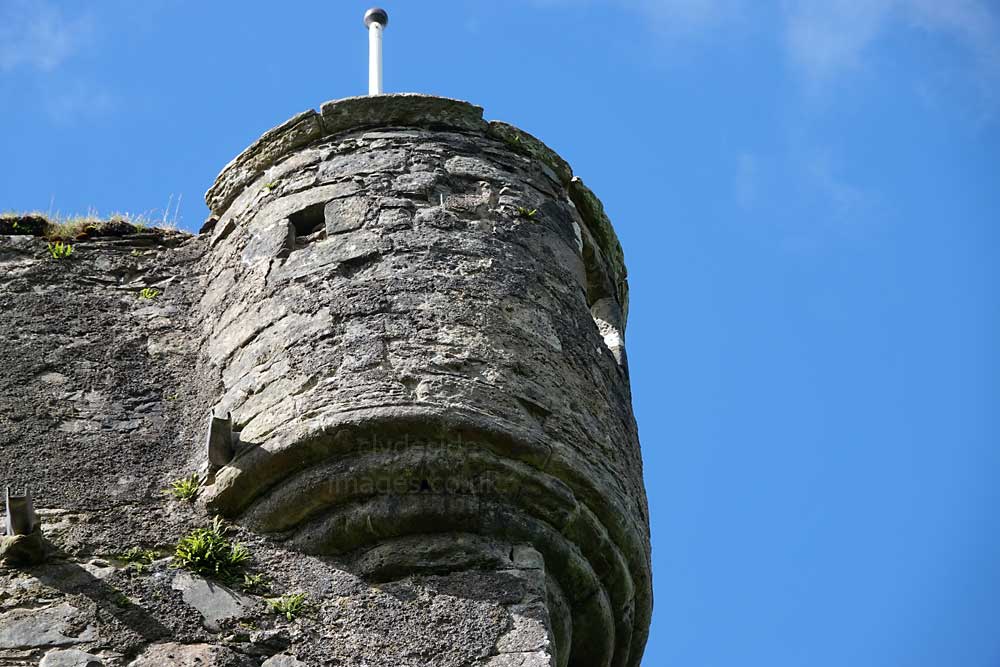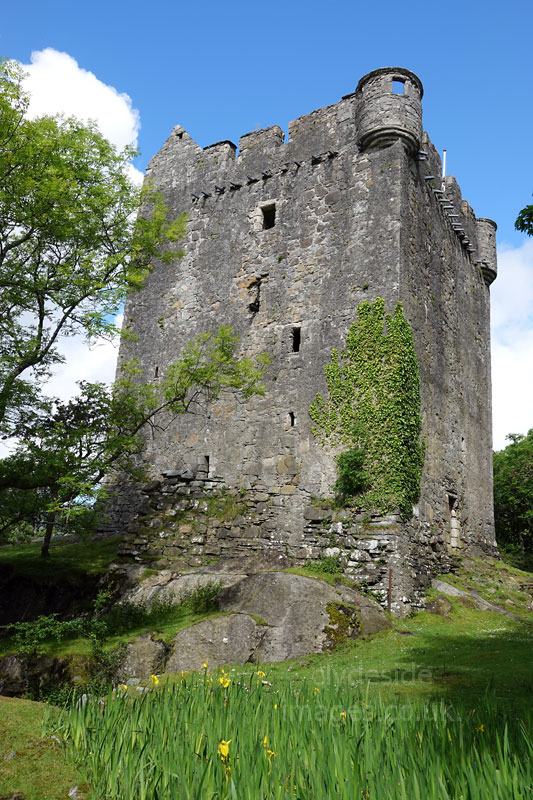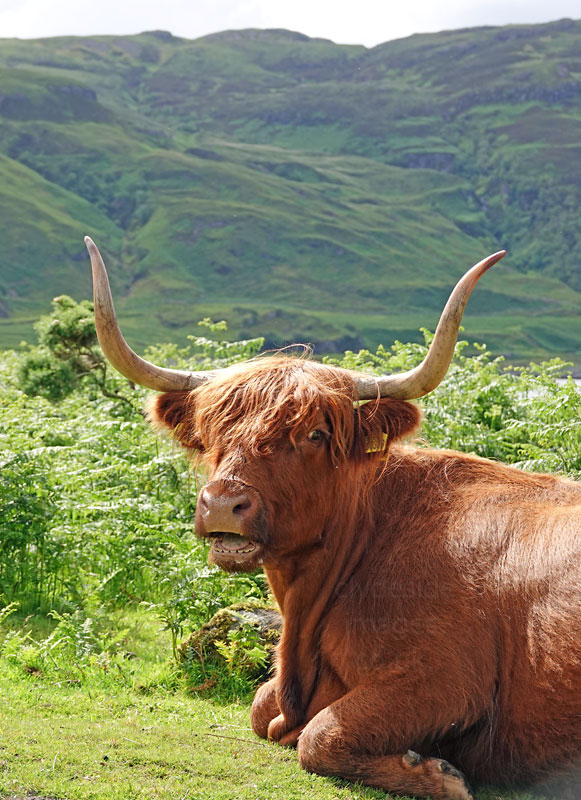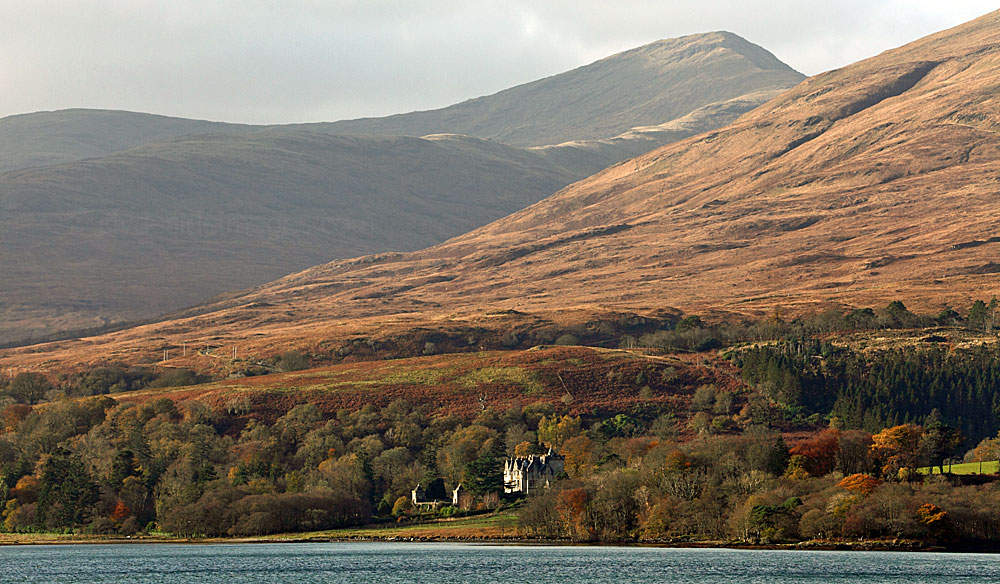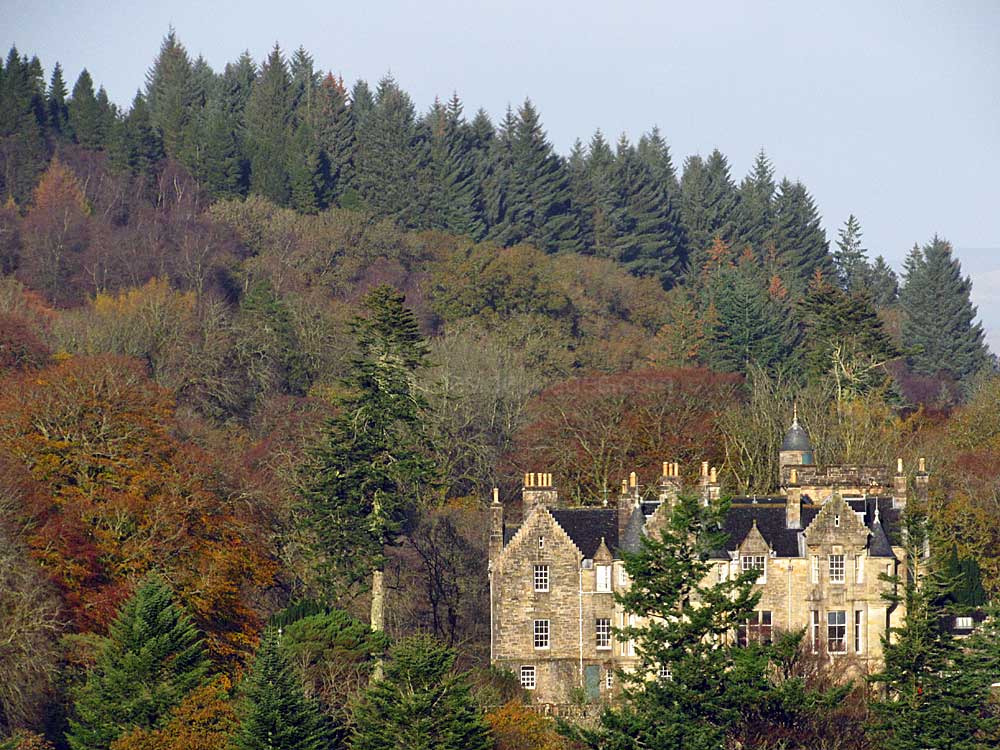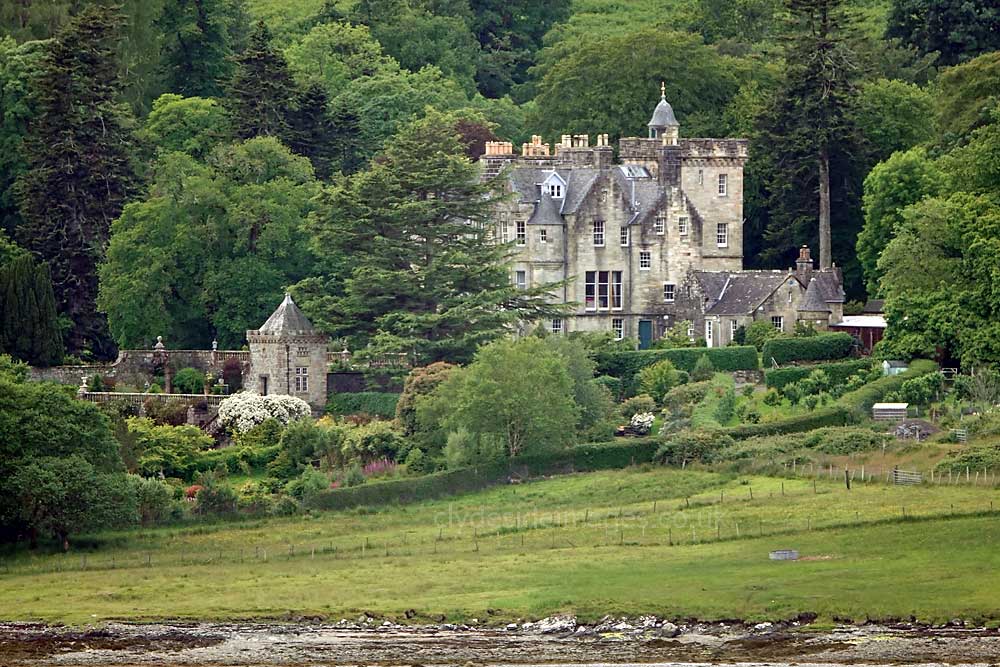Islands
Mull: Castles
*I am in the process of redesigning this section to include notes and many more high-res shots*
Aros Castle
The ruins of Aros Castle stand about 1¼ miles north of Salen on a low headland at the mouth of the Aros River overlooking the Sound of Mull. Like Duart Castle further south, it was built in the 13th century as one of a series of fortresses intended to control this relatively sheltered and strategically important sea channel.
Nowadays, not much remains of the castle complex which, in addition to the keep, was thought to have been surrounded by a curtain wall containing other small buildings. A deep ditch cut into the rock would have defended the landward approach and would originally have been spanned by a drawbridge. Exploration of the ruins requires care due to potentially unstable stonework and sheer drops on the seaward sides, some being partially concealed by vegetation.
|
Aros Castle was originally built by the MacDougalls, but it passed to the MacDonalds in the 1300s. During the 1400s, it was used as an occasional base by the Lords of the Isles, at which time it was known as Dounarwyse Castle. After the suppression of the Lords of the Isles by James IV in 1493, the stronghold passed to the Macleans of Duart. When they in turn fell out of favour in the 1600s Aros became a Campbell possession before gradually falling into disuse.
To reach the ruins, take the minor road east, off the A848, just north of its junction at Aros Bridge with the minor road that heads directly north to Dervaig. Signs indicate where parking is possible without obstructing others, and from here you walk the remaining couple of hundred yards to the castle. |
In autumn and winter the estuary which the castle overlooks often holds Goldeneye, Eider, Teal, Wigeon, Goosander and is an important fuelling station for migrating waders such as Dunlin, Greenshank, Redshank, and Whimbrel. Otters also tend to favour this location too.
Duart Castle
Duart Castle, a McLean stronghold, has an interesting and at times violent history. It was in use until 1751 after which it lay abandoned until 1910 when it was purchased by Sir Fitzroy McLean, the 26th Clan Chief, who began the long process of restoration. The castle is now open to the public although the best view of it is undoubtedly from the sea.
Strategically positioned, this stark stronghold guards the intersection where the Sound of Mull, Loch Linnhe and the Firth of Lorne meet and was just one link in a chain of castles on this section of Scotland`s West Coast. Others include Dunstaffnage, Dunollie, Aros, Ardtornish, and Mingary. This panorama shot, taken from Duart Castle`s roof, looks north up the Sound of Mull.
Duart Castle dates from the 13th century when a thick rectangular curtain wall enclosed a courtyard on the rocky outcrop. In 1350 Lachlan Lubanach, the 5th Chief, married Mary MacDonald, the daughter of the Lord of the Isles, and she was given Duart as her dowry. Lachlan Lubanach built the keep (tower house) on the outside of the original curtain wall which was incorporated in the alterations to enclose the well.
The peak towering behind the castle in these views*, is Dun da Ghaoithe which translates as the `fort of the two winds`. At 766 metres, it`s the island`s second highest hill after Ben More, but its summit offers what many rate as the finest views on Mull. *
The wooden box to the left of the sword is made from African Oak and comes from the wreck of the Spanish Galleon in Tobermory Bay. The cannonballs were found lodged in the walls of the castle during the restoration of 1911.
In the mid 17th century, Duart`s defences were drastically strengthened and the accommodation improved. For hundreds of years the Macleans, like many of the powerful clans, formed alliances and were involved in feuds with other clan chiefs and sometimes the crown. More information can be found on the Duart Castle website.
|
In 1691 the Macleans surrendered Duart and all their lands on Mull to the Duke of Argyll. The Castle, although in a fairly ruinous condition was used as a garrison for Government troops until 1751. It was then abandoned until purchased by Sir Fitzroy Maclean. Duart`s flock of cheeky Chaffinch aren`t slow when it comes to begging for crumbs. *
|
This fenced field, covered in bluebells in spring and summer, is actually a graveyard. The board reads: `After the disaster of 1745, when Sir Hector supported Charles Edward Stewart, Duart was used as a garrison until 1751 by the English troops of George II. This small cemetery contains the graves of some of these soldiers, their wives and children, who lived in the castle at this time. The garrison had arranged for a cemetery to be consecrated by an English bishop so they would not have to be buried in a "heathen`s graveyard!`
The Maclean flag and CalMac ferries MV Coruisk and Isle of Mull snapped from the roof of Duart Castle in June 2019.
Duart Castle features in the 1971 film When Eight Bells Toll, starring Anthony Hopkins, the 1999 film Entrapment, starring Sean Connery and Catherine Zeta-Jones, and in the US TV series Buffy the Vampire Slayer. The still from the Anthony Hopkins movie are on display within the castle. The view below shows the combined shop and toilet block, which is behind the grey cottage in the foreground.
Moy Castle
Moy Castle, an imposing tower house, stands on a low platform of rock at the head of Loch Buie, a sea loch on the south coast of Mull. The stronghold was built as a dwelling in the 15th century by Hector MacLean, brother of MacLean of Duart who re-named his branch of the clan as the MacLaines of Lochbuie. The Clan Chief, who supported the failed Jacobite rising of 1689, was forced to surrender the castle to the Earl of Argyll in 1690 due to his involvement, but the castle was restored to the MacLaines in 1697.
Moy House, pictured here, was built nearby as a more comfortable residence and the family abandoned the castle in 1752. This in turn was subsequently abandoned when the current Lochbuie House was constructed.
Moy Castle comprises three storeys with a garret. The two main chambers on the ground and first floors have cross barrel-vaulted roofs, a unique feature of the structure. The vaulting on the first floor runs in the opposite direction from that of the ground floor. In the centre of the ground floor there is a well cut into solid rock to a depth of 1.8 m. The main first floor has an impressive barrel-vaulted chamber, which originally served as the main hall.
There is a latrine chute still visible on the south-west wall. Nearby, is a hatch providing the only access to a well-constructed pit-prison or bottle-dungeon, 3.3 m in depth and 1.2 m square at the base, with tapering side walls. Between 2006 and 2015 extensive stabilisation works, mostly financed by the Heritage Lottery Fund, were carried out to preserve the castle and prevent further decay but entry is currently prohibited due to the risk, albeit greatly reduced, of crumbling masonry. Additional repairs to the main door, entrance area and stabilisation of the elevations below the buttresses will be undertaken when sufficient funds are obtained.
This model in the Mull Museum, Tobermory, shows how Moy Castle including its interior would have looked circa 1600.
Each turret is provided with small windows and smaller square openings, possibly firing apertures. A steeply raked loop with double aperture at the base protects the entrance to the castle. A small burn flows past the castle to the shore but a plank footbridge enables visitors to cross and explore the exterior of the castle at close quarters, even when the water is fast flowing.
Torosay Castle
|
Almost hidden in the trees nowadays, Torosay Castle, is not a traditional castle as such but a Victorian mansion house designed in the Scottish Baronial style by architect David Bryce for John Campbell of Possil. It was completed in 1858. Torosay and its surrounding gardens used to be open to the public and were linked to the pier at Craignure by a narrow-gauge steam railway.
I visited the castle many years ago and remember the fine interior and looking through some of the Guthrie family photo albums on display which told a fascinating account of their many trips and adventures to far flung destinations. Following the sale of the castle in 2012 to a Swiss buyer, the castle and grounds are now private with no public access. |
|
Tobermory
|
|
Ulva
|
Please bear in mind that all my images are subject to copyright. They are not free to use and have been embedded with a digital watermark.
